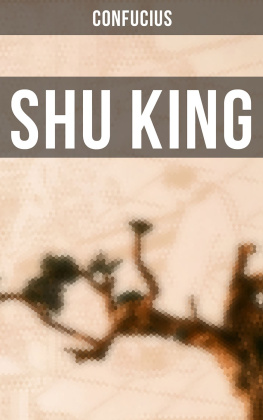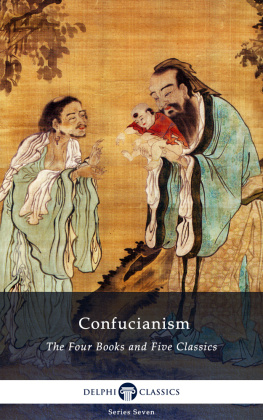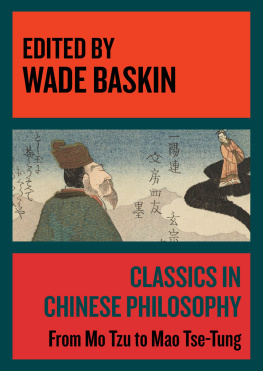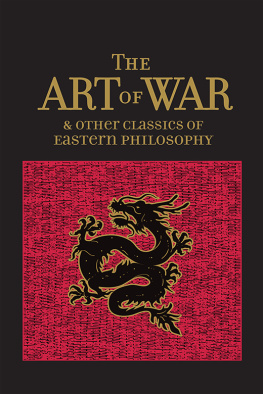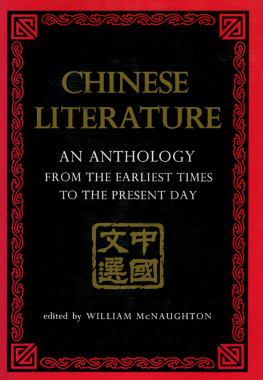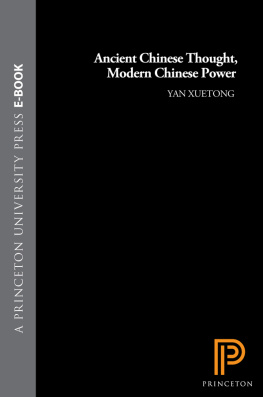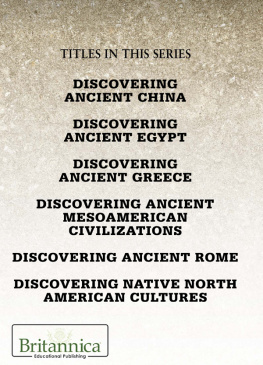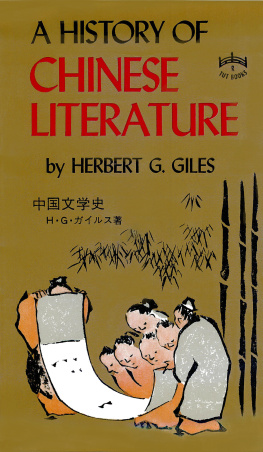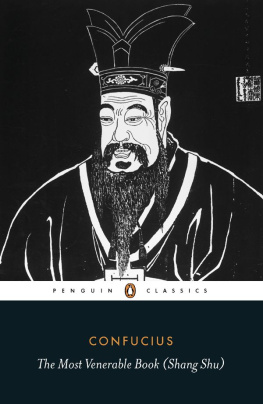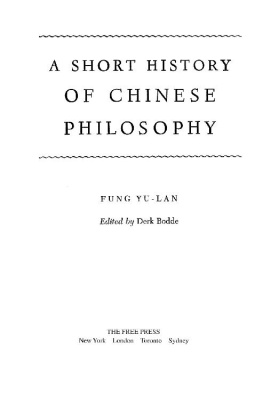Confucius - Shu King: The Book of Documents
Here you can read online Confucius - Shu King: The Book of Documents full text of the book (entire story) in english for free. Download pdf and epub, get meaning, cover and reviews about this ebook. year: 2022, publisher: Musaicum Books, genre: Detective and thriller. Description of the work, (preface) as well as reviews are available. Best literature library LitArk.com created for fans of good reading and offers a wide selection of genres:
Romance novel
Science fiction
Adventure
Detective
Science
History
Home and family
Prose
Art
Politics
Computer
Non-fiction
Religion
Business
Children
Humor
Choose a favorite category and find really read worthwhile books. Enjoy immersion in the world of imagination, feel the emotions of the characters or learn something new for yourself, make an fascinating discovery.
- Book:Shu King: The Book of Documents
- Author:
- Publisher:Musaicum Books
- Genre:
- Year:2022
- Rating:3 / 5
- Favourites:Add to favourites
- Your mark:
- 60
- 1
- 2
- 3
- 4
- 5
Shu King: The Book of Documents: summary, description and annotation
We offer to read an annotation, description, summary or preface (depends on what the author of the book "Shu King: The Book of Documents" wrote himself). If you haven't found the necessary information about the book — write in the comments, we will try to find it.
Shu King: The Book of Documents — read online for free the complete book (whole text) full work
Below is the text of the book, divided by pages. System saving the place of the last page read, allows you to conveniently read the book "Shu King: The Book of Documents" online for free, without having to search again every time where you left off. Put a bookmark, and you can go to the page where you finished reading at any time.
Font size:
Interval:
Bookmark:
While submitting here some prefatory observations on the version of the Sh King presented in this volume, I think it well to prefix also a brief account of what are regarded as the Sacred Books of the Religions of China. Those religions are three:--Confucianism, Toism, and Buddhism.
I. I begin with a few words about the last. To translate any of its books does not belong to my province, and more than a few words from me are unnecessary. It has been said that Buddhism was introduced into China in the third century B.C.; but it certainly did not obtain an authoritative recognition in the empire till the third quarter of our first century . Translations from the Sanskrit constitute the principal part of the Buddhistic literature of China, though there are also many original works in Chinese belonging to it.
II. Confucianism is the religion of China par excellence, and is named from the great sage who lived in the fifth and sixth centuries B.C. Confucius indeed did not originate the system, nor was he the first to inculcate its principles or enjoin its forms of worship. He said of himself (Analects, VII, i) that he was a transmitter and not a maker, one who believed in and loved the ancients; and hence it is said in the thirtieth chapter of the Doctrine of the Mean, ascribed to his grandson, that 'he handed down the doctrines of Yo and Shun, as if they had been his ancestors, and elegantly displayed the regulations of Wn and W, taking them as his models.'
In fulfilling what he considered to be his mission, Confucius did little towards committing to writing the views of antiquity according to his own conception of them. He discoursed about them freely with the disciples of his school, from whom we have received a good deal of what he said; and it is possible that his accounts of the ancient views and practices took, unconsciously to himself, some colour from the peculiar character of his mind. But his favourite method was to direct the attention of his disciples to the ancient literature of the nation. He would neither affirm nor relate anything for which he could not adduce some document of acknowledged authority. He said on one occasion (Analects, III, ix) that he could describe the ceremonies of the dynasties of Hsi (B.C. 2205-1767) and Yin (B.C. 1766-1123), but did not do so, because the records and scholars in the two states of Ku, that had been assigned to the descendants of their sovereigns, could not sufficiently attest his words. It is an error even to suppose that he compiled the historical documents, poems, and other ancient books from various works existing in his time. Portions of the oldest works had already perished. His study of those that remained, and his exhortations to his disciples also to study them, contributed to their preservation. What he wrote or said about their meaning should be received by us with reverence; but if all the works which he handled had come down to us entire, we should have been, so far as it is possible for foreigners to be, in the same position as he was for learning the ancient religion of his country. Our text-books would be the same as his. Unfortunately most of the ancient books suffered loss and injury after Confucius had passed from the stage of life. We have reason, however, to be thankful that we possess so many and so much of them. No other literature, comparable to them for antiquity, has come down to in such a state of preservation.
But the reader must bear in mind that the ancient books of China do not profess to have been inspired, or to contain what we should call a Revelation. Historians, poets, and others wrote them as they were moved in their own minds. An old poem may occasionally contain what it says was spoken by God, but we can only understand that language as calling attention emphatically to the statements to which it is prefixed. We also read of Heaven's raising up the great ancient sovereigns and teachers, and variously assisting them to accomplish their undertakings; but all this need not be more than what a religious man of any country might affirm at the present day of direction, help, and guidance given to himself and others from above. But while the old Chinese books do not profess to contain any divine revelation, the references in them to religious views and practices are numerous; and it is from these that the student has to fashion for himself an outline of the early religion of the people. I will now state what the books are.
First, and of greatest importance, there is the Book of Historical Documents, called the Sh and, since the period of the Han dynasty (began B.C. 202), the Sh King. Its documents commence with the reign of Yo in the twenty-fourth century B.C., and come down to that of king Hsiang of the Ku dynasty, B.C. 651-619. The earliest chapters were not contemporaneous with the events which they describe, but the others begin to be so in the twenty-second century B.C. The reader will find a translation of the whole of this work without abridgment.
Second, and nearly as important as the Sh, there is the Shih, or the Book of Poetry. It contains in all 305 pieces, five of which are of the time of the Shang dynasty (called also the Yin), B.C. 1766-1123. The others belong to the dynasty of Ku, from the time of its founder, king Wn, born B.C. 1231, to the reign of king Ting, B.C. 606-586. The whole is divided into four Parts, the last of which is occupied with 'Odes of the Temple and the Altar.' Many pieces in the other Parts also partake of a religious character, but the greater number are simply descriptive of the manners, customs, and events of the times to which they belong, and have no claim to be included in the roll of Sacred Texts. In this volume will be found all the pieces that illustrate the religious views of their authors, and the religious practices of their times.
The third work is the Y, commonly called the Book of Changes. Confucius himself set a high value on it, as being fitted to correct and perfect the character of the learner (Analects, VII, xvi); and it is often spoken of by foreigners as the most ancient of all the Chinese classics. But it is not so. As it existed in the time of the sage, and as it exists now, no portion of the text is older than the time of king Wn, mentioned above. There were and are, indeed, in it eight trigrams ascribed to F-hs, who is generally considered as the founder of the Chinese nation, and whose place in chronology should, probably, be assigned in the thirty-fourth century B.C. The eight trigrams are again increased to sixty-four hexagrams. To form these figures, two lines, one of them whole (------) and the other divided(--- ---), are assumed as bases. Those lines are then placed, each over itself, and. each over the other; and four binograms are formed. From these, by the same process with the base lines, are obtained eight figures,--the famous trigrams. Three other repetitions of the same process give us successively sixteen, thirty-two, and sixty-four figures. The lines in the figures thus increase in an arithmetical progression, whose common difference is one, and the number of the figures increases in a geometrical progression, whose common ratio is two. But what ideas F-hs attached to his primary lines,--the whole and the divided; what significance he gave to his trigrams; what to the sixty-four hexagrams,--if indeed he himself formed so many figures; and why the multiplication of the figures was stayed at sixty-four:--of none of these points have we any knowledge from him. There is some reason to believe that there were texts to the hexagrams under the dynasties of Hsi and Shang, but none of them have been preserved. It may be that king Wn and his equally famous son, the duke of Ku, adopted much of what they found already existing, and incorporated it with their own interpretations of the figures; but they, and they alone, are accepted as the authors of the text of the Y. King Wn, we are told, at a time when he was imprisoned by the tyrannical sovereign with whom the dynasty of Shang or Yin ended, took in hand the ever-changing hexagrams, and appended to each a brief explanation of the meaning which the trigrams composing it suggested by their union to his mind; and in some cases the practical course in affairs to which that meaning should direct. His son did for the separate lines of each hexagram what Wan had done for the whole figure. Confucius is said to have entered into their labours about 600 years afterwards. Several appendixes are ascribed to him, in which there is an attempt to explain the origin of the F-hs figures, and many of the interpretations of Wn and his son. The early linear figures; the notes of Wn and the duke of
Font size:
Interval:
Bookmark:
Similar books «Shu King: The Book of Documents»
Look at similar books to Shu King: The Book of Documents. We have selected literature similar in name and meaning in the hope of providing readers with more options to find new, interesting, not yet read works.
Discussion, reviews of the book Shu King: The Book of Documents and just readers' own opinions. Leave your comments, write what you think about the work, its meaning or the main characters. Specify what exactly you liked and what you didn't like, and why you think so.

